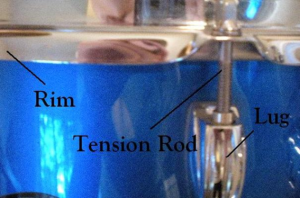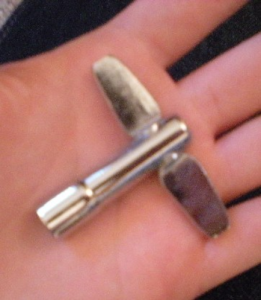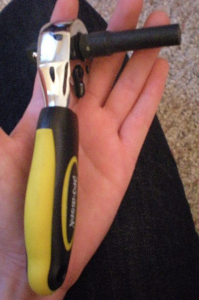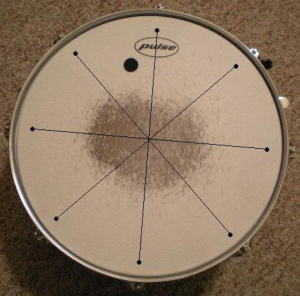 Tuning & I have a love-hate relationship. When things are good, we work together well and things are great; if they’re bad, one of us walks away angry… (I’ll give you a hint: The drum usually stays.)
Tuning & I have a love-hate relationship. When things are good, we work together well and things are great; if they’re bad, one of us walks away angry… (I’ll give you a hint: The drum usually stays.)
When should you tune? I always check my drums before practices & especially before gigs. If you transport the drums in very hot or very cold weather, the heads will expand or compress accordingly and will need tuning after the trip. It’s important that the drums reach room temperature again before tuning, or else the head might pull (see below). Other than those particular times, it’s never a bad idea to give your drums a little check-up.
First thing’s first: You’re the boss. There’s no magical Super-Secret-Drum-Code saying what you have to tune your drums to. Some people tune low, others tune high. It’s completely up to you. Personally, I tune to the 1st, 3rd, and 5th notes in the key of C (C, E, G), and I prefer a deeper tone.
Before you start tuning, it’s a good idea to take the drumhead off completely and wipe down the rim and shell with a dry cloth.
Once that’s done, put the head and rim back on. Screw the tension rods back on by hand until they’re secure enough. At this point you’ll need to get out a drum key. They generally look like this:
Mine’s a little different:
I love, love, LOVE this tool. It works like a ratchet, and it makes tuning much easier. It’s nifty if you’re picky about tuning. (ProMark DK30 Low Torque ratchet. So hot right now.)
Pick a place to start and tighten the tension rod. From there, work the rod across from it. Next, tighten the rod clockwise from your original rod. And so on and so on. By going across clockwise, you’ll avoid pulled heads.
Pulled heads are nasty buggers. That’s where the head of the drumhead rips apart from the metal hoop that it’s attached to. This makes tuning useless because the head can’t tighten anymore.
While you tune, you should be hitting around the area that you’re tuning and listen for the change in pitch. It’s helpful to remember how far you turn your drum key (1 full rotation, ½ rotation, etc…) and to use that on each rod before you do more fine-tuning (Pun totally intended). If you keep a consistent rotation, you’ll make tuning SO much easier on yourself. This keeps a rod’s (Not the Madonna/baseball guy…) pitch more accurate than simply guesstimating.
The fine-tuning is mostly by ear. You’ll have to hit around the circumference of the drum head and listen for inconsistencies.
Also, don’t forget the bottom head. Some people say to tune it higher than the top. This doesn’t produce a sound that I particularly like, so I tune the bottom lower than the top head. Not extremely lower, though. Also, make sure that the bottom head is in tune before working the top. If the top head is in tune, but the bottom is out of tune, the whole drum will sound bad.
I remember when I first started drumming and someone would say how far out of tune a drum was. “It sounded just fine to me,” I would think. Your ears will become accustomed to tiny tune-y details the more you sit and really listen to the pitch of your drums. Along with that, in time you’ll find what you like and don’t like in a drum’s tone. Like most things drum-ish, play around with variations until you hit one that suits your playing style.





Check out Bob Gatzen with his tuning techniques.
http://video.google.com/videoplay?docid=-3598381811706495656#
Bob Gatzen shares his vast knowledge of sound production and design in this comprehensive and practical approach to drum tuning. The method is simple, straightforward and effective for all styles and all levels. With this video, you will get the sound out of your instrument that you have been looking for.
A quick tip to your bass drum head. When applying a new head, take a blowdryer slowly around the outside of the head when it’s resting on the shell. This will help lock your head in place and will help with an awesome sound while tuning.